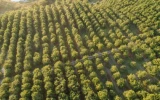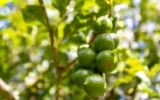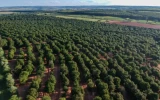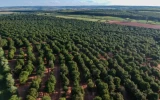Are Macadamia Trees Easy to Grow? 5 Things to Remember
Macadamia trees are native to Australia, but they can be grown in many other parts of the world, including the US. But, before you start planting, you should know that these trees require specific environmental conditions for optimal growth. In this article, we'll explore whether macadamia trees are easy to grow and provide you with five things to remember.
Macadamia trees can be somewhat challenging to grow. They only thrive in well-draining soil with good fertility, require regular watering, and need a warm, frost-free climate to flourish. They can be grown in a container, but they may not produce nuts as abundantly.
If you live in a region with cold winters, you may need to grow your macadamia tree in a greenhouse or indoors during the winter months. As you read the rest of the article, we'll help you with some more tips to ensure that your macadamia trees thrive.
Compared to other nut trees, macadamia trees are on the easier side to grow, giving more confidence to someone starting a new macadamia orchard from scratch.
Summary
- Macadamia trees require well-draining, slightly acidic soil with a pH level between 5.0 and 6.5, which can be a challenge for growers in areas with naturally alkaline soil, requiring soil amendment strategies to create a suitable environment for the trees.
- Limited space and shading from surrounding structures can hinder macadamia tree growth, making it challenging to provide the necessary conditions for optimal development.
- Macadamia trees demand labor-intensive cultivation, from manual orchard maintenance and harvesting to post-harvest processing, and require a long maturation period of the tree, especially when grown from seeds.
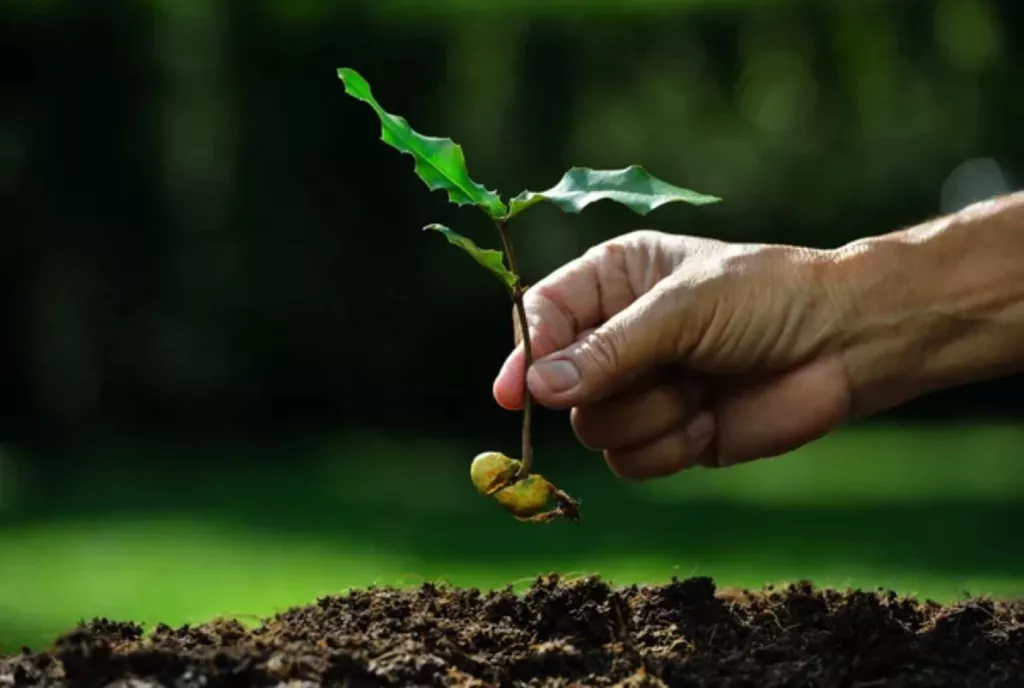
Macadamias Can Be Challenging to Grow
Macadamia trees can be somewhat challenging to grow due to their specific requirements for soil, climate, and care. Here are 5 things you need to remember when growing these nut trees:
1. They only thrive in well-draining, slightly acidic soil with a pH level between 5.0 and 6.5
Macadamias thrive in well-draining, slightly acidic soil with a pH level between 5.0 and 6.5. This specific soil requirement can be a challenge for growers in areas with naturally alkaline soil.
In alkaline soils, certain nutrients may become less accessible to the trees, leading to nutrient deficiencies and poor growth. This can result in stunted trees, reduced flowering, and ultimately lower nut yields.
In regions where the natural soil pH is higher than the ideal range for macadamias, growers may need to implement soil amendment strategies to lower the pH and create a more suitable environment for the trees.
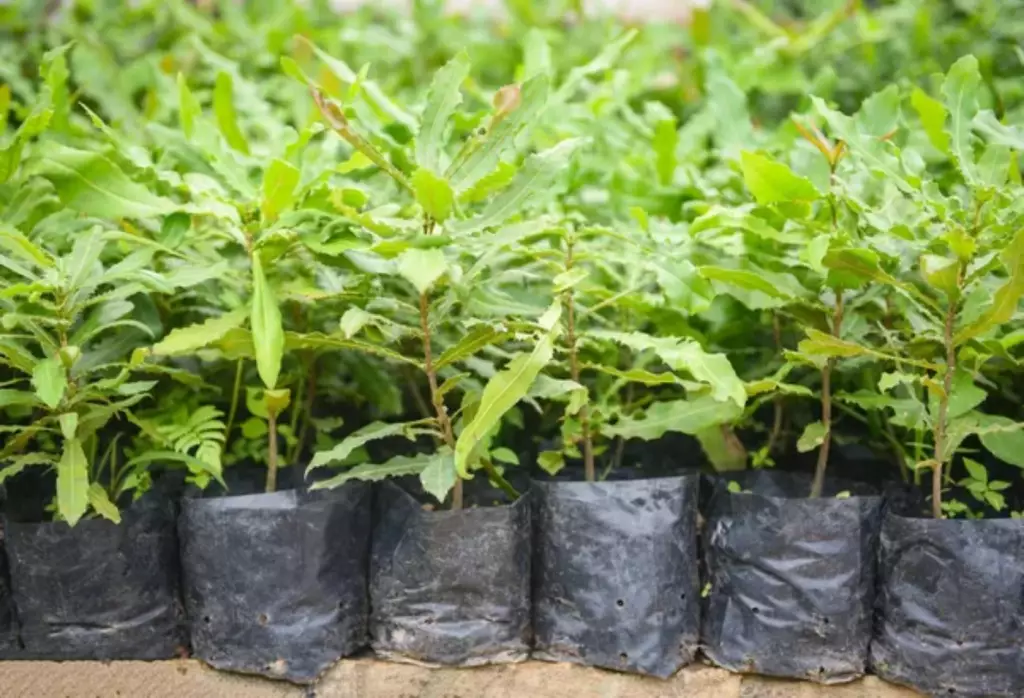
This can involve the addition of acidic organic matter, such as compost or peat moss, or the application of specific soil acidifying products.
Furthermore, the adjustment of soil pH is a long-term process that requires careful monitoring and maintenance. It may involve ongoing soil testing and the application of amendments over several years to achieve and sustain the desired pH level for optimal macadamia growth.
2. They need adequate spacing and sunlight to flourish
Macadamia trees require adequate spacing and sunlight to flourish, making them challenging to grow in certain environments. The need for sufficient spacing is primarily due to the tree's size and the spread of its root system. You can find out more about the optimal distance between macadamia trees in this article.
Macadamia trees can grow quite large, and their root systems extend widely, requiring ample space to avoid competition for nutrients and water.
Additionally, adequate sunlight is crucial for the trees to photosynthesize effectively and produce a healthy yield of nuts.
In densely populated areas or for growers with limited land, providing the necessary spacing and sunlight for macadamia trees can be a significant constraint.
Limited space may restrict the ability to plant the trees at the optimal distance from each other, leading to overcrowding and reduced growth.
Furthermore, surrounding buildings or structures may cast shadows that impede the trees' access to sunlight, further hindering their development.
3. They require labor-intensive cultivation
Macadamia trees are known for their labor-intensive cultivation requirements, which contribute to the challenges of growing this crop. The labor-intensive nature of macadamia cultivation stems from several factors:
Firstly, the process of establishing and maintaining a macadamia orchard demands significant manual labor. Planting young macadamia trees, ensuring proper spacing, and maintaining the orchard through activities such as pruning, weeding, and pest control all require hands-on attention.
Secondly, the harvesting of macadamia nuts is a labor-intensive task. Unlike some other crops that can be harvested mechanically, macadamia nuts are typically harvested by hand to prevent damage to the delicate nuts. This manual harvesting process is time-consuming and requires a significant workforce, especially in larger orchards.
Furthermore, the post-harvest processing of macadamia nuts also adds to the labor intensity of cultivation. The nuts must be dehusked, dried, and often cracked open to extract the edible kernel, all of which involves manual labor.
In addition to the physical labor involved, the long maturation period of macadamia trees adds to the labor-intensive nature of cultivation.
Macadamia trees typically take several years to reach full productivity, requiring ongoing care and maintenance during this establishment phase.
4. They are tropical natives
Macadamia trees thrive in warm, subtropical, or tropical climates with well-distributed rainfall and mild winters. Here are some specific reasons why climate can make it challenging to grow macadamias:
They are sensitive to frost
Macadamia trees are sensitive to cold temperatures, particularly during their early growth stages. Frost can damage the delicate young trees and affect the development of the nuts. Therefore, regions with frequent or prolonged periods of cold weather are not suitable for macadamia cultivation.
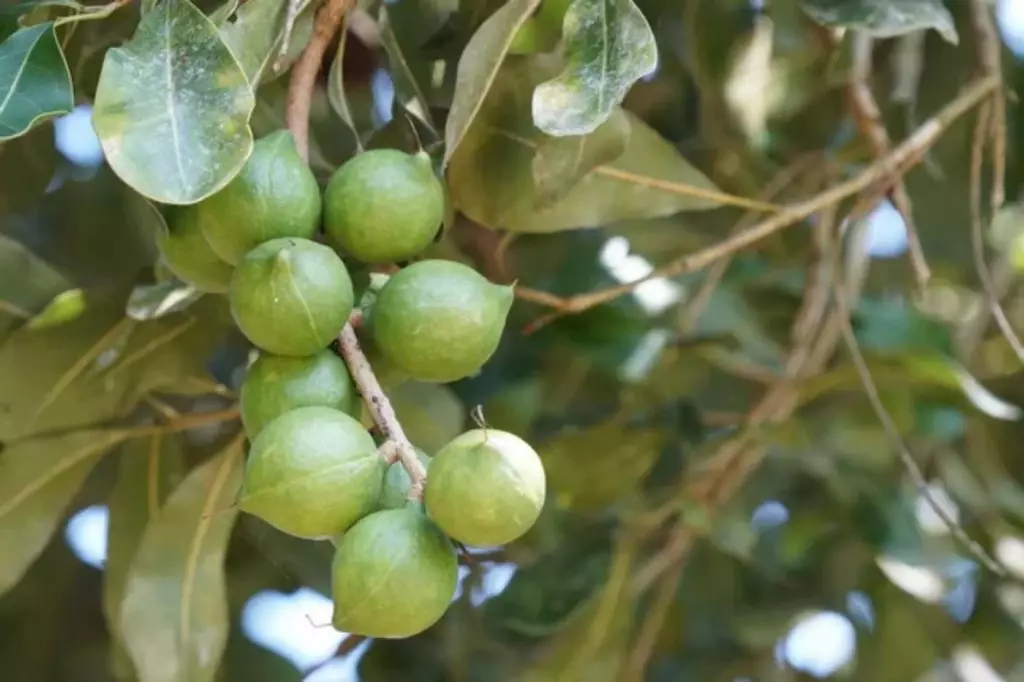
They require plenty of rainfall
Adequate and well-distributed rainfall is essential for the healthy growth of macadamia trees. While they can tolerate some dry periods, prolonged droughts can stress the trees and impact nut production.
Conversely, excessive rainfall or waterlogged soil can lead to root rot and other diseases, affecting the overall health of the trees.
They can develop diseases if the area is highly humid
High humidity levels can create favorable conditions for fungal diseases, such as powdery mildew and phytophthora, which can severely impact macadamia trees.
In areas with consistently high humidity, growers may need to implement specific management practices to mitigate the risk of disease.
They can be destroyed by strong winds
Strong winds can cause physical damage to macadamia trees, especially when they are laden with heavy nuts. Wind can also lead to desiccation and water stress, particularly in areas with hot, dry winds.
Their growth can be affected by altitude
While macadamia trees are adaptable to a range of altitudes, there are optimal altitude ranges for their successful cultivation. Extreme altitudes, whether too high or too low, can impact the trees in several ways.
At high altitudes, where the air is thinner and temperatures are lower, macadamia trees may experience reduced growth rates and delayed flowering.
The lower temperatures at higher altitudes can also affect the trees' development and the maturation of the nuts. Additionally, exposure to more intense sunlight at higher altitudes can lead to increased water stress in the trees, impacting their overall health and productivity.
At lower altitudes, particularly in areas with high temperatures and humidity, macadamia trees may face challenges related to increased disease pressure.
Fungal diseases, such as powdery mildew and phytophthora, thrive in warm and humid conditions, posing a risk to the health and productivity of the trees.
The optimal altitude range for macadamia cultivation typically falls within the subtropical and tropical regions, where the climate is characterized by moderate temperatures, well-distributed rainfall, and a suitable balance of sunlight and shade.
In these regions, the altitude provides the ideal environmental conditions for the trees to thrive, leading to healthy growth and consistent nut production.
5. Macadamia trees are known to be susceptible to a variety of diseases
There are several reasons why this susceptibility to diseases makes macadamias hard to grow.
Their susceptibility to diseases increases the risk of crop failure
Macadamia trees can be affected by various fungal, bacterial, and viral diseases, which can lead to reduced yields or even complete loss of the crop. This can have a significant impact on the economic viability of macadamia farming.
The management of diseases in macadamia trees can be complex and costly
Growers may need to invest in disease management strategies such as regular monitoring, applying fungicides or other treatments, and implementing cultural practices to minimize the spread of diseases.
These efforts require time, resources, and expertise, adding to the overall challenge of growing macadamias.
It may limit the areas where macadamias can be successfully cultivated
In regions where the prevalent environmental conditions favor the development and spread of diseases, the risk of growing macadamias profitably becomes higher. This can restrict the expansion of macadamia farming into new areas and limit the potential for increased production.
Tips for Growing Macadamia Trees
Here are some tips to help you overcome common challenges when growing macadamia trees:
Dealing with pests and diseases
Macadamia trees are susceptible to various pests and diseases, including macadamia felted coccid, macadamia nut borer, and Phytophthora root rot. To prevent these pests and diseases from damaging your trees, you need to take proactive measures such as the following:
- Inspect your trees regularly for signs of pests and diseases, such as wilting leaves, discolored foliage, or damaged bark.
- Use insecticides and fungicides to control pests and diseases. However, be sure to choose products that are safe for your trees and the environment.
- Practice good sanitation by removing fallen leaves, nuts, and other debris from around your trees. This will help prevent the buildup of pests and diseases.
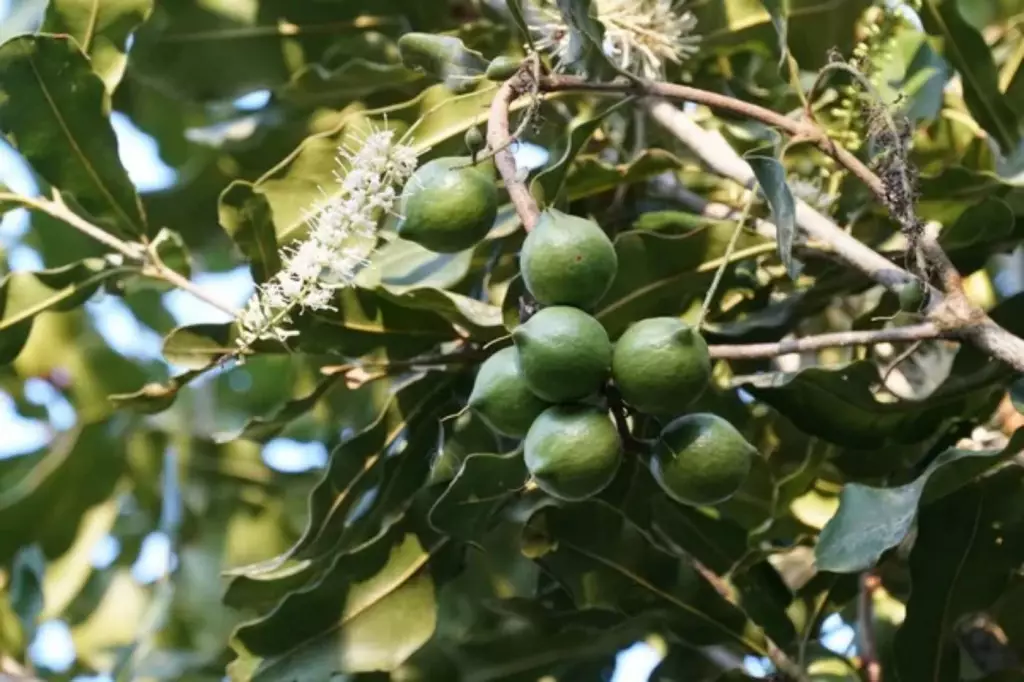
Managing climate and environmental stress
Macadamia trees thrive in warm, tropical climates with well-drained soil. However, they can also tolerate cooler temperatures and some droughts. Here are some tips for managing climate and environmental stress:
- Plant your trees in well-drained soil that is rich in organic matter. This will help prevent waterlogging and root rot.
- Provide adequate water during dry spells, but avoid overwatering, as this can lead to root rot.
- Protect your trees from frost and cold temperatures by covering them with blankets or tarps. You can also use frost cloth or other protective coverings to shield your trees from the cold.
- Provide shade during hot, dry weather to prevent your trees from becoming stressed. You can use shade cloth or other coverings to provide shade.
Tips for planting macadamias in pots
Macadamia trees can be grown in pots, but there are several factors to consider to ensure successful growth. Here are some key points to consider when growing macadamia trees in pots:
Keep in mind the pot size
Macadamia trees have deep root systems, so it's important to choose a large pot that allows for adequate root development. A pot with a diameter of at least 24 inches and a depth of 24 inches or more is recommended to accommodate the tree's roots.
Plant in a pot full of well-draining and slightly acidic soil
A mix of potting soil, sand, and perlite can provide good drainage and aeration for the roots. Check also if the soil is slightly acidic, with a pH level between 5.5 and 6.5.
Place the pot in areas with full sun exposure
When growing them in pots, you need to place the pots in a sunny location, such as a patio or balcony, where the trees can receive at least 6-8 hours of sunlight per day.
Water the pots regularly
Adequate watering is crucial for macadamia trees, especially during the growing season. The soil should be kept consistently moist but not waterlogged. You need to water the trees deeply and allow the soil to partially dry out between waterings.
Protect the potted trees from frost
If you live in a cooler climate, consider bringing the pots indoors during the winter months or providing additional insulation to protect the trees from cold temperatures.
Apply a well-balanced fertilizer
Regular fertilization is important for potted macadamia trees to ensure they receive the necessary nutrients for healthy growth. A balanced fertilizer formulated for fruit and nut trees can be applied according to the manufacturer's instructions.
Tips in growing macadamias from seeds
Macadamia trees can be grown from seed, but the process may not be as straightforward as with some other types of trees. Here are some factors to consider when attempting to grow macadamia trees from seed:
The quality of the seeds is crucial to successful germination and growth
Fresh, high-quality seeds have a better chance of sprouting and developing into healthy trees. You may need to obtain seeds from a reputable source to ensure viability.
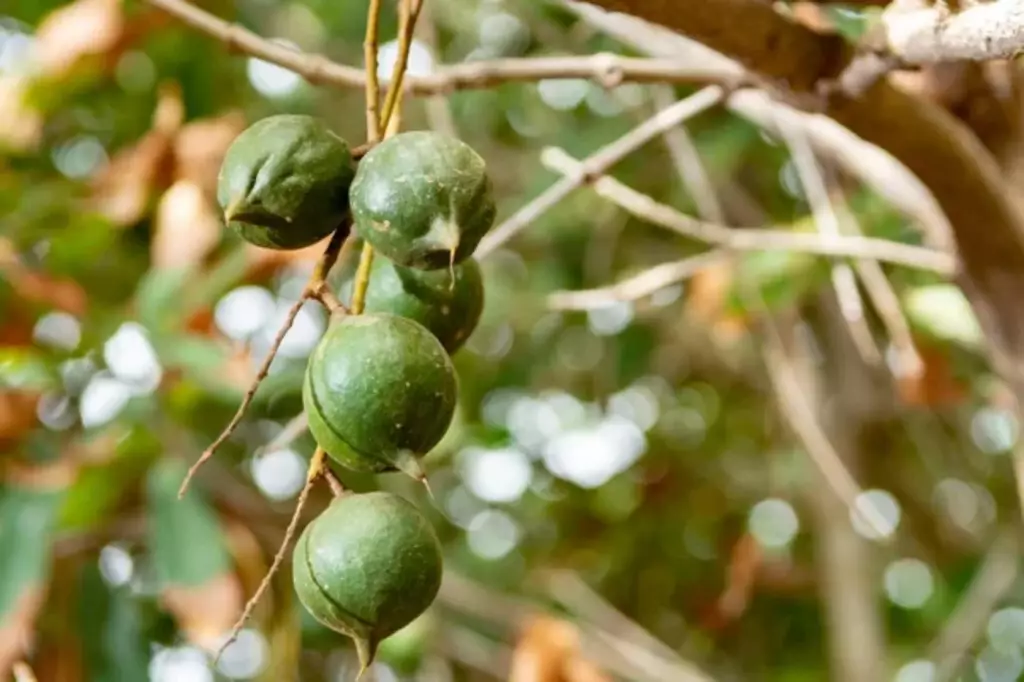
The germination process may be long
Macadamia seeds have a hard shell, which can make germination challenging. To improve germination rates, it is common practice to scarify the seeds by nicking or sanding the outer shell to allow moisture to penetrate and initiate the germination process.
They may take time to mature
Macadamia trees grown from seed may take several years to reach maturity and start producing nuts. This long timeline is an important consideration for those looking to grow macadamia trees for commercial nut production.
Due to the challenges associated with growing macadamia trees from seed, many commercial growers prefer to use vegetative propagation methods such as grafting or cloning to ensure the characteristics of the parent tree are preserved in the offspring.
